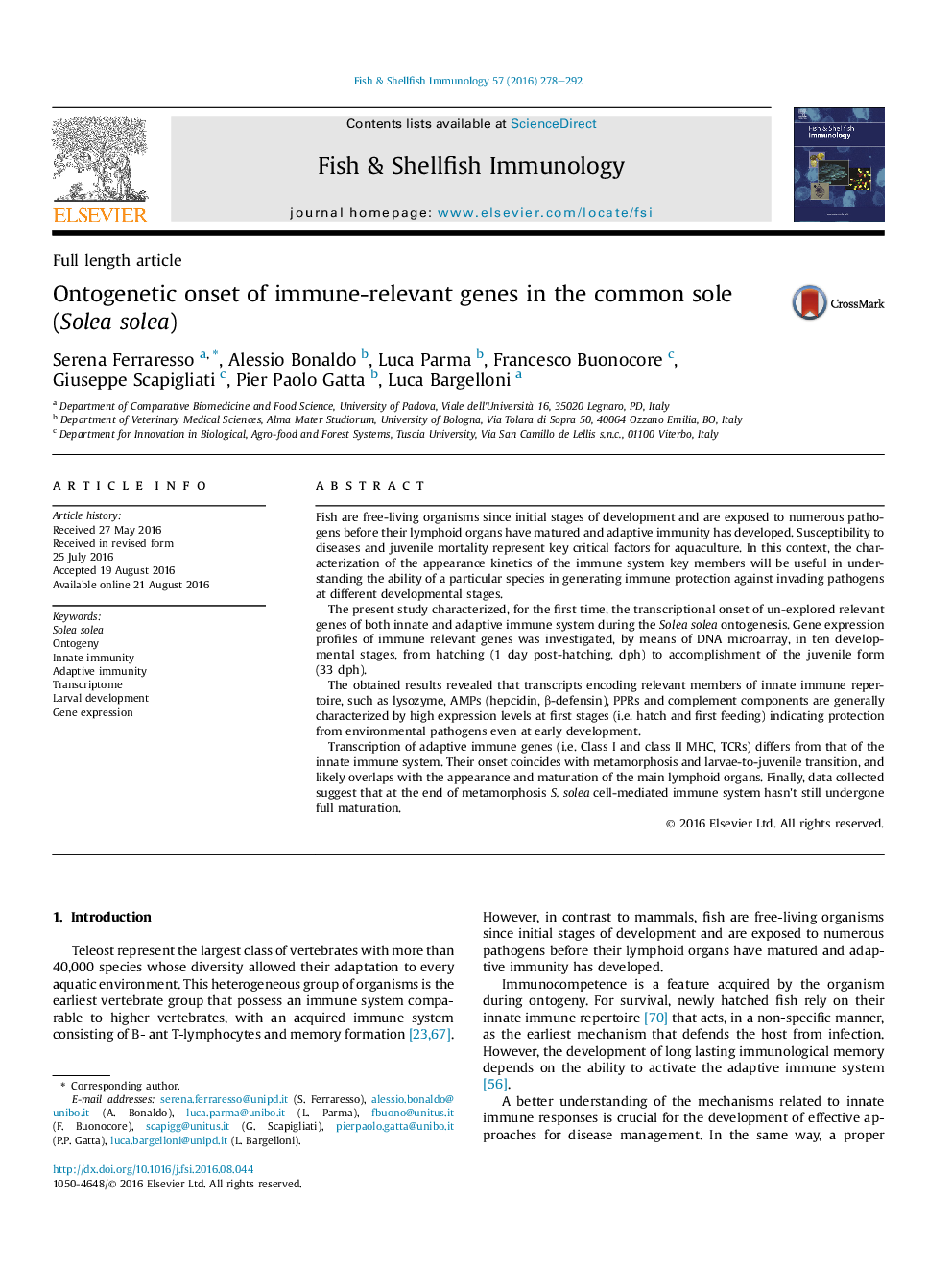| کد مقاله | کد نشریه | سال انتشار | مقاله انگلیسی | نسخه تمام متن |
|---|---|---|---|---|
| 2430574 | 1553617 | 2016 | 15 صفحه PDF | دانلود رایگان |

• Transcriptional onset of immune genes was investigated in S. solea from 1 to 33 days post hatching.
• Cationic and non-cationic B-defensins were identified in S. solea.
• Lysozyme, AMPs, NLRs and complement components show high expression levels at first stages.
• Onset of adaptive immune genes overlaps with metamorphosis and larvae-to-juvenile transition.
Fish are free-living organisms since initial stages of development and are exposed to numerous pathogens before their lymphoid organs have matured and adaptive immunity has developed. Susceptibility to diseases and juvenile mortality represent key critical factors for aquaculture. In this context, the characterization of the appearance kinetics of the immune system key members will be useful in understanding the ability of a particular species in generating immune protection against invading pathogens at different developmental stages.The present study characterized, for the first time, the transcriptional onset of un-explored relevant genes of both innate and adaptive immune system during the Solea solea ontogenesis. Gene expression profiles of immune relevant genes was investigated, by means of DNA microarray, in ten developmental stages, from hatching (1 day post-hatching, dph) to accomplishment of the juvenile form (33 dph).The obtained results revealed that transcripts encoding relevant members of innate immune repertoire, such as lysozyme, AMPs (hepcidin, β-defensin), PPRs and complement components are generally characterized by high expression levels at first stages (i.e. hatch and first feeding) indicating protection from environmental pathogens even at early development.Transcription of adaptive immune genes (i.e. Class I and class II MHC, TCRs) differs from that of the innate immune system. Their onset coincides with metamorphosis and larvae-to-juvenile transition, and likely overlaps with the appearance and maturation of the main lymphoid organs. Finally, data collected suggest that at the end of metamorphosis S. solea cell-mediated immune system hasn't still undergone full maturation.
Journal: Fish & Shellfish Immunology - Volume 57, October 2016, Pages 278–292